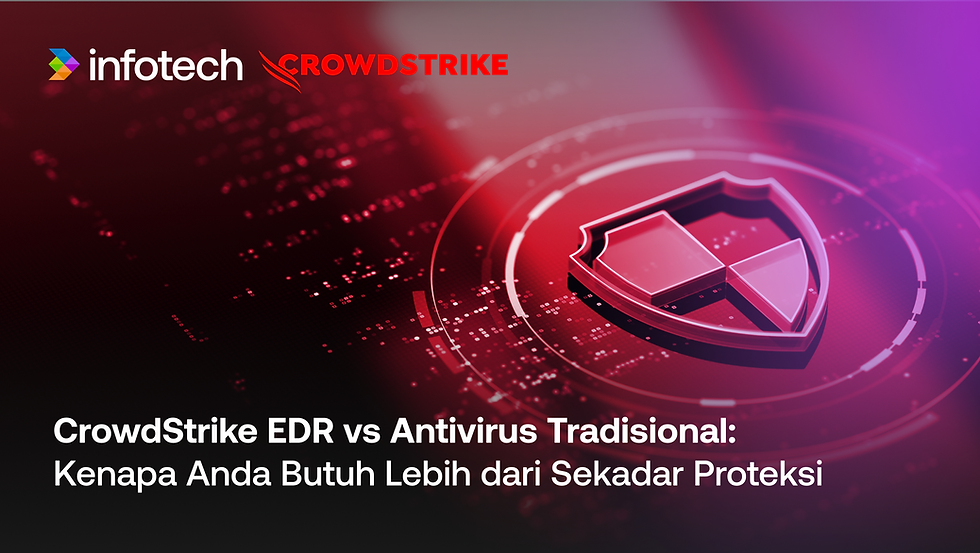Optimize Your Infrastructure with Terraform Services
- Muhamad Bagas Adil Hakim
- Aug 11, 2023
- 3 min read
Updated: Jan 23
At a large organization, your centralized operations team may get many repetitive infrastructure requests. We need an application to build a “self-serve” infrastructure model that lets product teams manage their own infrastructure independently.
You can create and use Terraform modules that codify the standards for deploying and managing services in your organization, allowing teams to efficiently deploy services in compliance with your organization’s practices
Introducing HashiCorp Terraform
HashiCorp Terraform is an infrastructure as a code tool that lets you define both cloud and on-prem resources in human-readable configuration files that you can version, reuse and share. You can then use a consistent workflow to provision and manage all of your infrastructure throughout its lifecycle. Terraform can manage low-level components like compute, storage and networking resources, as well as high-level components like DNS entries and SaaS features.
Terraform creates and manages resources on cloud platforms and other services through their application programming interfaces (APIs). Providers enable Terraform to work with virtually any platform or service with an accessible API.

The Core Terraform Workflow Consists of Three Stages:
1.Write
Define infrastructure in configuration files
2. Plan
Review the changes Terraform will make to your infrastructure
3.Apply
Terraform provisions your infrastructure and updates the state file

Key Points Using Terraform
Adopt: Compose infrastructure as code in a Terraform file using HCL to provision resources from any infrastructure provider
Build: Infrastructure automation workflow used to compose collaborate, reuse and provision infrastructure as code across IT operations and teams of developers
Standardize: Infrastructure automation workflow featuring security, compliance and cost management capabilities while using access controls, policy enforcement and audit
Innovative: Infrastructure automation workflow extending to all teams organizations with self-service infrastructure as code and integrates with VCS, ITSM, CI/CD
It also has several advantages over manually managing your infrastructure:
Terraform can manage infrastructure on multiple cloud platforms
The human-readable configuration language helps you write infrastructure code quickly
Terraform state allows you to track resource changes throughout your deployments
You can commit your configurations to version control to safely collaborate on infrastructure
Terraform Use Case
1. Multi-Cloud Deployment
Provisioning infrastructure across multiple clouds increases fault-tolerance, allowing for more graceful recovery from cloud provider outages. However, multi-cloud deployments add complexity because each provider has its own interfaces tools and workflows. Terraforms lets you use the same workflow to manage multiple providers and handle cross-cloud dependencies. This simplifies management and orchestration for large-scale, multi-cloud infrastructure
2. Application Infrastructure Deployment Scaling and Monitoring Tools
You can use Terraform to efficiently deploy, release, scale, and monitor infrastructure for multi-tier applications. N-tier application architecture lets you scale application could consist of a pool of web servers that use a database tier, with additional tier for API servers, caching servers and routing meshes. Terraform allows you to manage the resources in each tier together and automatically handles dependencies between tiers
3. Self-Service Clusters
At a large organization, your centralized operations team may get many repetitive infrastructure requests. You can use Terraform to build a “self-serve” infrastructure model that lets product teams manage their infrastructure independently. You can create and use Terraform modules that codify the standards for deploying and managing services in your organizations, allowing teams to efficiently deploy services in compliance with your organization’s practices. Terraform Cloud can also integrate with ticketing systems like ServiceNow to automatically generate new infrastructure.
4. Policy Compliance and Management
Terraform an help you enforce policies on the types of resources teams can provision and use. Ticket-based review processes are a bottleneck that can slow down development. Instead, you can use Sentinel, a policy-as-code framework, to automatically enforce compliance and governance policies before Terraform makes infrastructure changes. Sentinel is available with the Terraform Cloud team and governance tier.
5. PaaS Application Setup
Platform as a Service (PaaS) vendors like Heroku allow you to create web applications and attach add-ons, such as databases or email providers. Heroku can elastically scale the number of dynos or workers, but most non-trivial applications need many adds-on and external services. You can use Terraform to codify the setup required for a Heroku application, configure a DNSimple to set a CNAME and set up Cloudflare as a Content Delivery Network (CDN) for the app. Terraform can quickly and consistently do all of this without a web interface.
Looking for solution that helps your company to manage multiple providers and handle cross-cloud dependencies? Please visit our social media or contact us via email putu.pradnya@global-infotech.co.id


